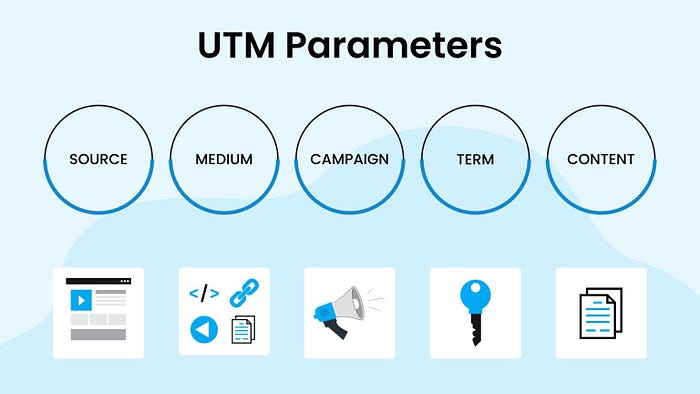The Ultimate Guide to UTM Parameters: Boost Your Campaign Tracking

Table of Contents
- What Are UTM Parameters?
- Why Are UTM Parameters Important?
- How Do UTM Parameters Work?
- The Key Components of UTM Parameters
- How to Create UTM Parameters
- Best Practices for Using UTM Parameters
- Common Mistakes to Avoid
- Pro Tips for Effective Campaign Tracking
- Conclusion
Introduction to UTM Parameters
Ever wonder how marketers measure the success of their campaigns? UTM parameters are the secret sauce behind accurate campaign tracking. These tiny snippets of text added to URLs allow you to track where your website traffic is coming from and how it interacts with your site.

Why UTM Parameters Are Essential for Marketers
In a digital world flooded with data, UTM parameters provide clarity. They help you understand which campaigns deliver results, enabling you to allocate your resources effectively. Without UTM tracking, it’s like driving blindfolded — you’re moving but have no idea where you’re going.
Understanding the Structure of UTM Parameters
What Are UTM Parameters?
UTM (Urchin Tracking Module) parameters are tags added to URLs to track the performance of marketing campaigns. They’re especially useful for identifying specific sources of traffic.
How UTM Parameters Work
When someone clicks on a link with UTM parameters, the data is sent to your analytics platform. This allows you to identify traffic sources, user behavior, and campaign effectiveness. Think of it as a digital breadcrumb trail.
Benefits of Using UTM Parameters
- Precise Campaign Tracking: Pinpoint exactly where traffic is coming from.
- Improved ROI Measurement: Determine which campaigns yield the best results.
- Enhanced Insights: Understand audience behavior in detail.
- Better Resource Allocation: Focus on strategies that work.

Creating UTM Parameters: A Step-by-Step Guide
- Identify the campaign you want to track.
- Use a consistent naming convention.
- Add the appropriate UTM parameters to your URL.
- Test the URL to ensure tracking is accurate.
- Use a UTM builder tool for convenience. TeamCamp’s UTM Builder is an excellent option to simplify this process.
The Key Components of UTM Parameters
UTM parameters consist of five main components:

How to Create UTM Parameters
- Identify Campaign Goals: Define the purpose of your campaign.
- Use a Reliable UTM Builder: Simplify the process by using tools like the TeamCamp UTM Builder.
- Ensure Consistency: Use a standard naming convention to maintain clarity in your analytics.

Best Practices for Using UTM Parameters
- Keep URLs Clean: Avoid unnecessary parameters.
- Use Consistent Naming Conventions: Standardize terms across campaigns.
- Test URLs: Ensure the parameters work correctly before launching campaigns.
- Shorten URLs: Use a URL shortener to make links user-friendly.
Common Mistakes to Avoid
- Overloading Parameters: Stick to relevant parameters.
- Using Inconsistent Terms: Maintain uniformity across campaigns.
- Ignoring Data Analysis: Regularly review the performance data
Pro Tips for Effective Campaign Tracking
- Automate UTM Creation: Leverage tools to streamline the process.
- Integrate with Analytics: Ensure your tracking links are properly set up with tools like Google Analytics.
- Monitor Trends: Regularly update your campaigns based on analytics insights.
- Include External Links: Provide value to readers by referencing tools like Google’s Campaign URL Builder.

Conclusion
UTM parameters are indispensable for digital marketers who want to maximize their campaign performance. By following best practices and using reliable tools, you can gain valuable insights into your audience and optimize future campaigns effectively.
Start enhancing your campaign tracking today with the Google UTM builder ,UTMbuilder.com TeamCamp UTM Builder. Make data-driven decisions and watch your marketing efforts thrive!
FAQs
- What are UTM parameters used for? They help track the performance of marketing campaigns by identifying traffic sources.
- Can UTM parameters affect SEO? No, they don’t affect your site’s SEO as search engines ignore them.
- Do I need a special tool to create UTM parameters? No, but tools like TeamCamp’s UTM Builder,Google UTM builder ,UTMbuilder.com make the process easier.
- How do I analyze UTM data? Use Google Analytics to filter and analyze UTM-tagged campaigns.
- Are UTM parameters case-sensitive? Yes, they are case-sensitive, so maintain consistency in naming.

Comments
Post a Comment